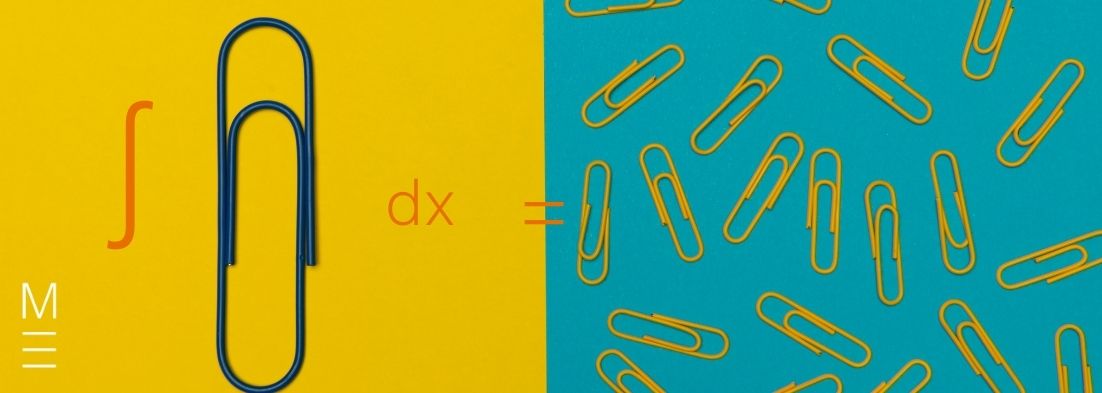Welcome to Matrix Education
To ensure we are showing you the most relevant content, please select your location below.
Select a year to see courses
Learn online or on-campus during the term or school holidays
Learn online or on-campus during the term or school holidays
Learn online or on-campus during the term or school holidays
Learn online or on-campus during the term or school holidays
Learn online or on-campus during the term or school holidays
Learn online or on-campus during the term or school holidays
Learn online or on-campus during the term or school holidays
Get HSC Trial exam ready in just a week
Get HSC exam ready in just a week
Select a year to see available courses
Science guides to help you get ahead
Science guides to help you get ahead

Are you struggling to grasp differential equations? Well, no fear! In this article, we will show you everything you need to know about Maths Ext 1 differential equations.
Differential equations are equations that relates a function to one or more of its derivatives. (e.g \( \frac{dx}{dy} = x + 1 \) ).
Differential equations focus on describing change (as derivatives are rates of change): useful whenever we want to model something in terms of its change instead of its intrinsic value.
For example, we might be more interested in analysing population growth (the rate at which population is changing depending on time), rather than total population at a certain point in time.
Differential equations are able to accurately model and predict real-world phenomena, thus having extensive applications in physics, economics, chemistry and engineering. This includes modelling population growth, exponential growth/decay, change in temperature, simple harmonic and projectile motion, and change in investment return over time.
A worksheet to test your knowledge. Fill out your details below to get this resource emailed to you. "*" indicates required fields
Free Y12 Maths Ext1 Differential Equations Worksheet

Free Y12 Maths Ext1 Differential Equations Worksheet
C3.2: Differential equations
Students are assumed to be familiar with:
Students can brush up on these topics by revising our other blog articles on the subjects.
A solution to an equation always satisfies the equation.
For a differential equation, the solution turns out to be a function which may be unfamiliar as we usually work with ordinary equations such as \( y = x + 1 \) where the solutions were all the points \( (x,y) \) such that the equation holds.
For example, for the differential equation \( y^{‘} = 2x \), by substituting in the function \( y=x^{2} \), the equation is satisfied.
Just as how an ordinary equation \( y=x+1 \) has multiple points as its solution (e.g \( (1,2), \ (3,4) \), etc.), the differential equation \( y^{‘} =2x \) has multiple functions as its solution
e.g \( y=x^{2} +1, y=x^{2} +2, \) etc, where differentiating all these functions will return \( 2x \rightarrow \ \text{satisfies} \ y^{‘} = 2x \).
To verify solutions of differential equations we simply substitute the given solution into the equation to ensure that the equation is satisfied.
Show that \( y=x^{3} + 2x + 4 \) is a solution to the differential equation \( \frac{dy}{dx} = 3x^{2} +2 \)
| \begin{align*} y &= x^{3} + 2x + 4 \rightarrow \ a \\ \frac{dy}{dx} &= 3x^{2} + 2 \rightarrow B \\ \\ \text{Sub A into B}, \\ \text{LHS of B} \ &= \ \frac{ \big{(} d(x^{3}+2x+4) \big{)} }{dx} \\ &= 3x^{2}+2 \\ &= \text{RHS of B} \\ \end{align*}\( \text{Thus, A satisfies B, so} \ y=x^{3} +2x+4 \ \text{is a solution to} \frac{dy}{dx} = 3x^{2} +2 \) |
A differential equation is one that relates a function to its derivatives.
The differential equations that are tested in the syllabus are in the form:
|
All the types \((1, 2, 3) \) of differential equations tested in the syllabus can be solved in the same way.
Starting with an example of type 1: \( \frac{dy}{dx} = x \)
To solve this equation, understand that we can treat \( \frac{dy}{dx} \) as individual numbers, so we can multiply both sides of the equation by dx, making the LHS \( dy \) and the RHS \(x dx\).
\( dy \) and \( dx \) is just an extremely small change in y or x respectively (e.g \( dy = 0.000001 \)).
\( \frac{dy}{dx} = x \) multiply each side by \( dx \) to move \( dx \) to the same side as \( f(x) = x \), we get:
\begin{align*}
dy = x \ dx
\end{align*}
\begin{align*}
\int dy \ = \ \int \ x \ dx
\end{align*}
This is why we move dx to the side of \( x \), because we want to integrate the function of \( x \) with respect to \( x \) (denoted by the \( dx \) ) \( \rightarrow \) not \( y \), which is why we did not move \( dy \) to the side with the \( x \).
The \( LHS \ = \ \int \ dy \) is just equivalent to: \( LHS \ = \ \int \ 1 \ dy \) , meaning we integrate \( 1 \) with respect to y which is equal to \( y+ \) constant
| \begin{align*} \int 1 dy \ &= \ \int \ x \ dx \\ y + \ “\text{constant} \ 1 ” \ &= x^{2} \ + \ “\text{constant} \ 2 ” \end{align*} |
We can move the constants to one side,
| \begin{align*} y = x^{2} + \ “\text{constant} \ 2 ” \ – \ “\text{constant} 1 ” \end{align*} |
Note that \( \text{constant} \ 2 \ – \ \text{constant} \ 1 \) is a constant itself, thus we can express is as a single constant denoted by \( c \) :
| \begin{align*} y \ = \ x^{2} \ + \ c \end{align*} |
The solution to the equation \( \frac{dy}{dx} \ = \ x \) are the functions (note the plural)
| \( y = x^{2} \ + \ c \) , where \(c \) is any constant |
The \( y\) ’s include \(g(y) \) and \(dy \), and the \( x \)’s include \( f(x) \) and \( dx \).
| \begin{align*} \frac{dy}{dx} \ &= \ f(x)g(y) \ \text{(type 3 equation)} \\ dy \ &= \ f(x)g(y) dx \\ \frac{1}{g(y)} dy \ &= \ f(x) dx \end{align*} |
For type 1, \( \frac{dy}{dx} = f(x) \), which is equivalent to a type 3 case when \( g(y) = 1 \)
For type 2, \( \frac{dy}{dx} = g(y) \), which is equivalent to a type 3 case when \( f(x) = 1 \)
Note that we want to integrate a variable with respect to that variable which is why we perform step 1.
We want to integrate \( f(x) \) with respect to \( x \) and \( g(y) \) with respect to \( y \).
\begin{align*}
\int \frac{1}{g(y)} dy \ = \ \int f(x) dx
\end{align*}
For type 1, \( g(y) = 1 \), so we are integrating 1 with respect to \( y \) (as seen in the example above).
For type 2, \( f(x) = 1 \), so we are integrating 1 with respect to \( x \)
\( \frac{dy}{dx} \ = \ xy^{2} \) with condition that when \( x = 1, \ y = 1 \)
1. Move \(x\)’s to one side, \(y\)’s to the other
\begin{align*}
\frac{dy}{dx} \ = \ xy^{2}
\end{align*}
To make it so that all the \(x\)’s are on the LHS, we multiply both sides by \( dx \):
\begin{align*}
dy = \ xy^{2}
\end{align*}
Mow we move the y’s to the RHS (opposite side to the \( x \)), we divide both sides by \( y^2 \)
\begin{align*}
\frac{1}{y^2} dy = x \ dx
\end{align*}
2. Integrate both sides
\begin{align*}
\int \frac{1}{y^2} dy \ = \ \int x \ dx
\end{align*}
3. Solve the integration
\begin{align*}
\frac{(-1)}{y} \ = \ \frac{x^2}{2} + c
\end{align*}
We only need one constant \( c \), because both the constants resulting from integrating both sides can be moved to one side and represented as a single constant.
Rearrange to subject \( y \):
\begin{align*}
y &= \frac{(-1)}{\frac{x^2}{2+c}} \\
y &= \frac{-2}{x^2+2c} \\
y &= \frac{-2}{x^2+d}
\end{align*}
As \( 2c \) is a constant itself which we can represent as another constant \( d (d = 2c) \)
4. Find constant by subbing in given conditions
When \( x = 1, y = 1 \)
Subbing into the solution \( y = \frac{-2}{x^2+d} \), we get:
\begin{align*}
1= \frac{-2}{d+1}
\end{align*}
Rearranging to find \( d \) :
\begin{align*}
d= -3
\end{align*}
Thus, the final solution is:
\begin{align*}
y= \frac{-2}{x^2-3}
\end{align*}
1. Type 1 Differential Equation:
Solve \( \frac{dy}{dx} = sinx \ + \ cosx \)
2. Type 2 Differential Equation:
Solve \( \frac{dy}{dx} = y \frac{dy}{dx} \) with condition when \( x = 1, y = e \)
3. Type 3 Differential Equation:
Solve \( \frac{dy}{dx} = (x+1)(y+3) \)
1.
\( \frac{dy}{dx} = sinx+cosx \)\begin{align*}
dy &= (sinx+cosx)dx \\
\int dy & = \int (sinx+cosx)dx \\
y &= -cosx+sinx+c
\end{align*}
2.
\( \frac{dy}{dx} y \), with condition \( (1, e) \)
\begin{align*}
\frac{1}{y} dy & = dx \\
\int \frac{1}{y} dy & = \int dx \\
ln \ y & = x+c
\end{align*}
Sub in condition \( x = 1, y = e \) to find constant \( c \)
\begin{align*}
ln \ e & = 1+c \\
c & =0 \\
y & = e^x
\end{align*}
3.
\( \frac{dy}{dx} = (x+1)(y+3) \)\begin{align*}
\frac{1}{y+3} dy &= (x+1) dx \\
\int \frac{1}{y+3} dy &= \int (x+1)dx \\
ln \ (y+3) &= x^2+x+c \\
y &= e^{x^2+x+c} -3
\end{align*}
With Matrix+, you will receive structured video lessons taught by HSC experts, comprehensive resources mailed to your doorsteps, and access to an online Q&A board to target your questions! Learn more about Matrix+ Online Course now.
Get ahead with Matrix+ Online
Expert teachers, detailed feedback and one-to-one help. Learn at your own pace, wherever you are.
© Matrix Education and www.matrix.edu.au, 2025. Unauthorised use and/or duplication of this material without express and written permission from this site’s author and/or owner is strictly prohibited. Excerpts and links may be used, provided that full and clear credit is given to Matrix Education and www.matrix.edu.au with appropriate and specific direction to the original content.